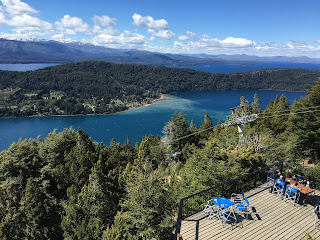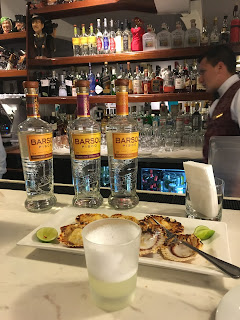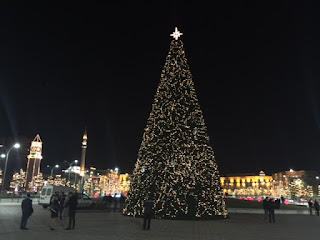As my eggs hit the pan, I had to shut the door to the Hostel Kitchen. The lone woman at the reception was in her 5th month and already feeling pukish I think. It was a dinner of eggs over tinned Tuna, after all Albania was over. As I sat there and ate along, I couldn't stop thinking about what I need to do the next day. Through my Macedonian coffee post dinner, I was playing with the idea of taking a road trip in Kosovo.
Pristina, the capital was only 2.5 hours away from Skopje. But it was not the mad capital I wanted to go to. The interiors and the town of Prizren was what I had read about and had even heard from my Tirana travel agent somedays back. The east of Macedonia which had to be dealt in the summer due to possible closed roads in the winter was a strike out for a day trip. So after some “what would be the price for a day” discussion with the reception, we reached a pick up time next day. In this way Kosovo made a wild card entry in the Balkan itinerary.
At 0700 hrs on a - 3 deg morning, the driver entered the hostel. “Do you want some coffee”? I asked the driver, as I was getting ready to leave the hostel kitchen. He promptly replied “no”. This and the opposite of ‘no’ were the two words he used mostly through our next 12 hours on the road. In the beginning all my attempts at making a conversation with him were futile as he was struggling more with the crazy fog and a visibility, than he was struggling with his english.
Through the years of traveling in countries where English is not the first language (all but New Zealand), I learnt very quickly that rather than them it is me who needs to speak their language in order to have a basic communication. Still, I have to be honest and say that it does get irritating at times when you are not alone and have a group of people waiting for a proper reply. On that foggy winter morning, however it didn't matter, as I was without my tourists, so it was all good.
Kosovo has a very dark past. First, it was in the joint Yugoslavia and even then 90 % of the population was Albanian. When Slovenia, Croatia and even Bosnia gained their independence from ex Yugoslavia, but more to say, from Serbia, Kosovo kept being watched over closely by its strong neighbour, Serbia. After Serbia let Montenegro go on brotherly grounds(both are orthodox catholics), it was Kosovo’s turn to declare itself free. The result, bombing and mass genocide of villages in Kosovo by the Serbian army. The Serbians I have met in my travels don't fully agree, but it is only after NATO bombed Belgrade, did Serbia withdraw its army from Kosovo. With that came also the mass exodus of the 15% orthodox catholic population to either orthodox Macedonia, Serbia or Montenegro.
 |
| The Bombed building from the war and the poster asking European Union to take notice |
Its not some 100 yr old text book thing, it happened less than 10 years ago and so the wounds are fresh. They can be felt in a different way in Kosovo than in Bosnia, where it was worst coz a neighbour killed a neighbour. I was expecting real poverty as I stamped my passport and entered Kosovo. What I saw was a major industrial zone instead. Automobiles and everything related to it. I guess it were the taxes or something in this youngest country in Europe that had turned it into an industrial hot spot of the south east. As we drove through the countryside and to Prizren, I noticed more and more cars with Swiss number plates. In towns there were Pizza places called, ‘Norway Pizza’. Refugees of Syria are in news now, in the late 90’s however there were the other kind of refugees, The Balkan refugees. I looked out of the window and thought, ‘what has changed since’?
 |
| Prizren, Kosovo, on a cold winter day .. |
The winter fog spread over Prizren, and through it pierced the minaret of the central mosque, screaming the muslim roots of the town. It was below freezing when I got out of the car and in the first 10 mins decided that Prizren would be a stop over for lunch in the itinerary and not maybe a place to spend a night. It had a old town with cobbled stone streets and cafes lined up to serve the summer visitors, but the charm was missing. The air was getting colder and I was ready to leave and proceed to my next stop, an orthodox monastery in the middle of a muslim land.
UNPROFOR is a short form of United Nations Protection Force and never in Kosovo is its presence more felt than in town of Decan, which is ethnically muslim. It was also here that I saw statues of soldiers who had laid their lives fighting for Kosovo’s liberation and the Albanian flag was always there to give company.
Some 2 kms from the town is the monastery where twenty orthodox catholic monks go quietly about their business of growing grapes and making a top quality red wine. The abundant green in the compound makes for some of the best goats milk cheese you can taste.
 |
| The Decani Orthodox Monastery |
The monastery was particularly special for my orthodox catholic driver who for the first time said more than yes and no. “This place, i want to come”, he said as he parked his car. The road to the monastery was heavily guarded as the last attack by the locals happened just 5 years ago with a few hand grenades being whirled inside the compound. I was told to give my ID at the check point by an Austrian young officer who was busy biting into his ham sandwich. With a ‘Visitors’ tag handed over to us, both me and the driver entered into a different world, right in the middle of muslim Kosovo. A young man showed us around and even spoke to the driver about the place. The driver had the face of ‘oh ya, I discovered something new’. I had to buy a bottle of red and a nice yellow goat cheese before getting back in the car. The place felt, I don’t know how to say, just special!!
Just 15 kms from the monastery was Pec (pronounced as pech) in Serbian and PeYa in Albanian. and as it is with all the town sign’s on the road, the cyrillic serbian letters were blackened by the locals, which announced that we were entering Peya.
The temperature had dropped to - 5 and it was really chilly when I decided to take a random walk in the old town. The town reminded me of Sarajevo in Bosnia, after all it was the Ottomans who ruled this land for 400 years. The highlight of the walk was a stop at a local kebab place. I avoided a few Kebab places on my walk, but when the chill got to my bones, i simply walked in the next food joint and what a joint it turned out to be. The menu was priced in cents and the food was certainly worth more than the 2 euro 50 cent bill I payed. The warmth with which the four guys at the grill served the meat, made this place all the more a ‘no fuss eatery’.
 |
| Both Albania and The Blue Mosque in Istanbul visible in everyday life in Kosovo |
The batteries of my watch had given up on me but it was more than just that which I got from the local watch shop. “Why dont you stay here, you should know this place before you get your people here”, said the son of the watch maker. I know if I said yes, he would take me to his house. :-)
Those were the last words I heard from a local before I quickly skipped through the capital Pristina on my way back to Skopje.
Kosovo is special .. not too pretty just special. “I drive to Tirana in 5 hours and pick up from Shereton” the driver said as he dropped me to my hostel. He had got his english tongue magically from somewhere, but I guess it was for his next pick up.
As for me I had got the taste of Kosovo in a day.





































